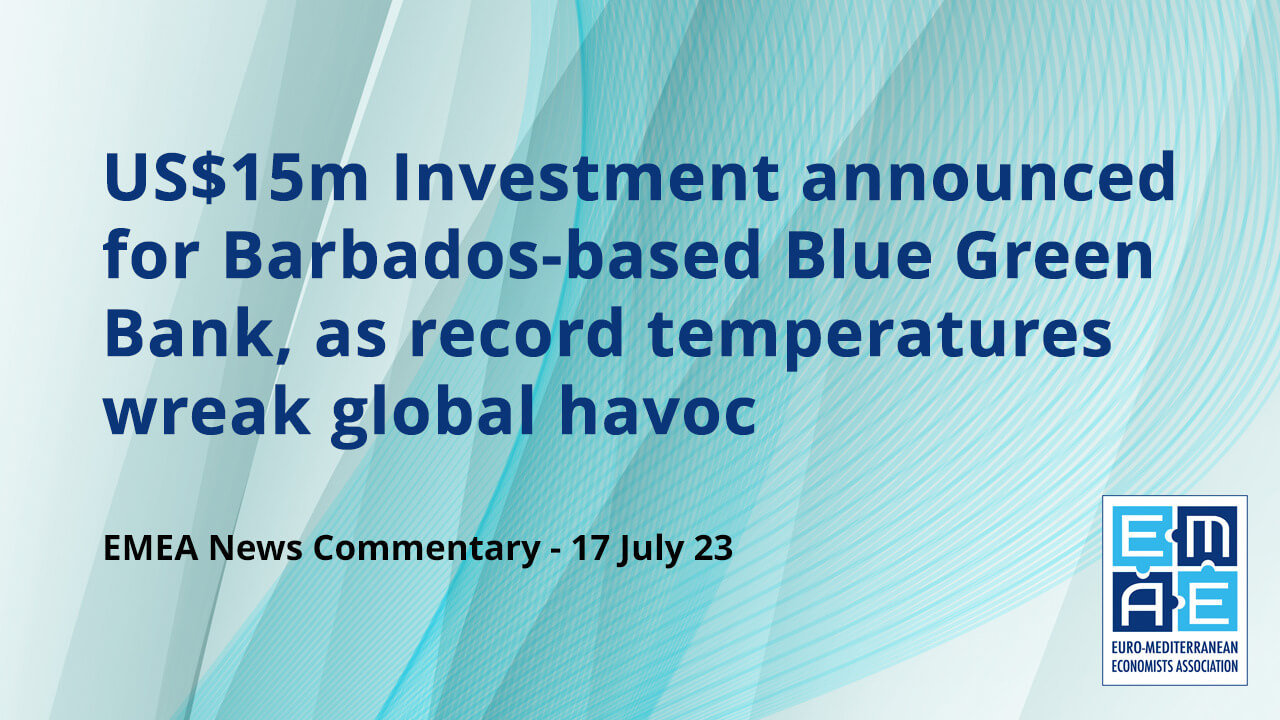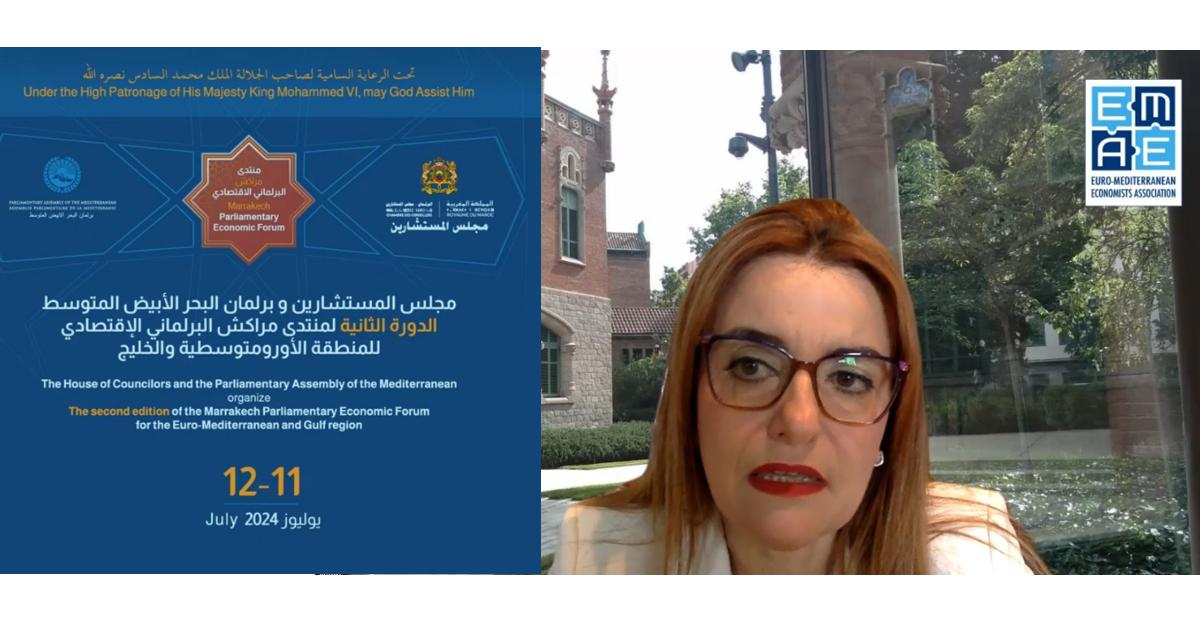The Green Climate Fund, the world’s largest climate fund and a component of the 2015 Paris Agreement, has announced a US$15m investment in the proposed Barbados-based Blue Green Bank.
According to the Barbadian Government’s Online Information Service, the Blue Green Bank plans to invest “in green affordable homes, assisting with providing hurricane resilient roofs, the electrification of transport and other ‘Paris-aligned’ investments.”
Once it is fully funded, the Bank’s aim is to have a lending capacity of BDS$500 million.
Describing the Bank’s funding abilities as a game changer, Barbados Prime Minister Mia Mottley said it would provide an opportunity to better finance climate resilience and action. “We see the Blue Green Bank playing a particularly critical role in accelerating our transition to net zero, boosting resilience, enfranchising workers, drawing in private-sector investment and prudently managing public finances and public debt levels,” she said.
Establishing the Blue Green Bank as an influential funding source is a key plank of the Barbados Government’s ongoing climate policy reforms, supported by the Resilience and Sustainability Facility with the International Monetary Fund.
“We hope this Bank demonstrates to others what is bankable, crowds in other investments and plays a critical role in building a more resilient and sustainable nation, communities and people,” Prime Minister Mottley continued. “We hope it will become a model for others and part of a global network of similar institutions, sharing best practices, policies, instruments and investments, to support diversification.
“Today in the wake of record-breaking global temperatures, we are certain climate change is upon us and must invest to protect our citizens from hurricanes, flooding and droughts, preserve our natural capital and pursue an aggressive net zero target,” she warned.
Wildfires are bigger and more prevalent
Linked to the warming planet reference, we’ve included an overview and link to an article in the Financial Times, entitled “Wildfires are here to stay.”
The article provides graphic eye-witness accounts of tackling forest fires and training being undertaken in western Poland by several hundred professional firefighters, along with others from around Europe “to meet, learn and give mutual support.”
“There was no such thing as an average fire – they all had potential and everyone needed to be prepared for wind that “may be stronger, the vegetation may be drier, the slope may carry the flames faster. Be a student of fire,” warned observers.
The narrative referred to Canada facing its worst year of wildfires on record, of New York being blackened in an ominous orange haze and of record blazes across unprecedented areas of places as far afield as southern Europe and Australia.
“Almost everywhere, fires are burning bigger, hotter, longer. The best wildland firefighters can suppress 99 per cent. But it’s the remaining one per cent that matters. That tiny minority — sparked by lightning or human beings, fanned by winds and a warming planet — is responsible for nearly all the damage,” the article reported.
In Portugal, journalists were asking in vain about the whereabouts of helicopters to put out the fires. The problem was the smoke was either too thick to fly in or the drops of water evaporated before they reached the flames. “It’s like spitting on a campfire. We waste so much money on these large fires that would be much better spent on prevention, mitigation and preparedness,” says Mike Flannigan, a professor of wildland fire at Canada’s Thompson Rivers University.
“In the 1980s, a 1,000-hectare fire was something big. In the ’90s, it was 5,000 hectares. In the 2000s, it was 10,000 hectares. Now it’s something bigger than 30,000,” says Marc Castellnou, head of Graf, Catalunya’s specialist wildland fighting agency. Fires now crossed rivers and roads that might once have acted as firebreaks.
New South Wales, Australia, is no stranger to wildfires – they’ve been a common occurrence for years. But they are now burning across far greater areas (1.8mn hectares in 2020). The difference is that today’s wildfires, fuelled by climate change, are more intense, the article recounted.
The piece said that we were advised years ago that wildfires would increase under climate change, but the warnings weren’t heeded, quoting a 2014 report from the Intergovernmental Panel on Climate Change: “Impacts from recent climate-related extremes, such as heatwaves, droughts, floods, cyclones and wildfires, reveal significant vulnerability and exposure of some ecosystems and many human systems to current climate variability (very high confidence).”
Wildfires now occur even in intact parts of the Amazon rainforest that were once too wet to burn.
Fire creates more carbon emissions
Ironically, countries like Portugal, Spain, Italy and Greece may see fewer forest fires in future, because increasingly arid climates will limit the growth of vegetation. Trees won’t have sufficient water and time between fires, to regrow to their former height. Land will transition to scrubland.
“Nowadays, there’s this movement to plant trees to store carbon, which I think is another mistake, because they will burn, at least in southern Europe and also progressively in northern Europe,” says Portugal’s Paulo Fernandes, Associate Professor at the University of Trás-os-Montes. “We cannot really trust forest plantations to store carbon.”
Worse, forest fires generate huge carbon emissions, which would be soaked up if the forest regrew where it was. But in the intervening decades, they would help to accelerate climate change, increasing the risk of even more fires. As fires become more frequent, a larger proportion of forests would be in a degraded state, holding less carbon and less biodiversity.
The article also referenced a recent UN report predicting that extreme fires would increase by 14 per cent by 2030, 30 per cent by 2050 and 50 per cent by 2100.
“Even with more prescribed burning, more land management and more care over ignitions, uncontrollable fires are likely to remain. Climate change would mean longer fire seasons, more lightning and more evaporation, meaning more flammable landscapes,” the article reported.
US $15m Investment For Proposed Barbados-based Blue Green Bank | GIS (gisbarbados.gov.bb)
Extreme wildfires are here to stay. Can human beings really fight them? | Financial Times (ft.com)





